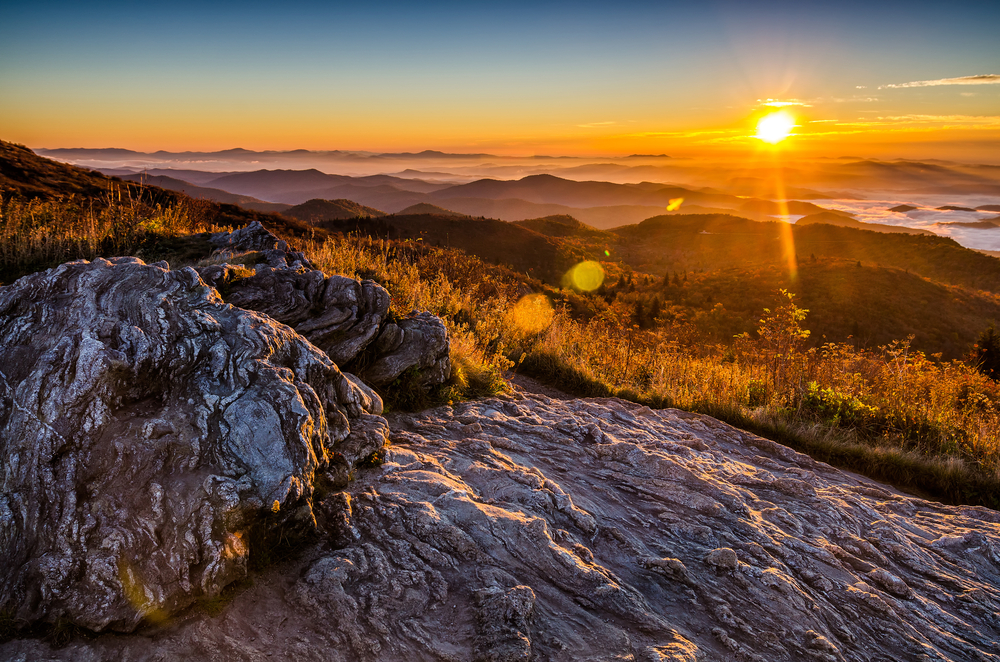A Trail for Every Season
A short guide to navigating weather, insects, smoke and crowds in America’s top backpacking destinations.

There is no one-size-fits-all wilderness. In fact, some of our favorite places on the planet – truly awe-inspiring places – are likely to make you miserable if you go at the wrong time. Whether it’s black flies in the Adirondacks or heavy snowmelt in the Rockies, billowing smoke in the High Sierra or 120 degree heat in West Texas, even the best places have bad moments and a little planning goes a long way to avoid the worst of nature’s inconveniences.
While we can’t guarantee you bluebird skies and seventy degrees, a basic understanding of the forces at play will help you find that perfect combination of time and place that we all seek. In the end it all comes down to temperature and water and the ways that we can optimize for these:
Spring is for the High Desert (late March to late June):
The spring is generally wet in the United States and this is particularly true of places that we seek for backcountry travel. High mountain territory in the West is often snowbound this time of year making backcountry travel dangerous or impossible. In lower Eastern elevations the snow melts quickly but leaves our loamy soils saturated, supporting hordes of insects relatively early in the season. On the contrary, these wet Spring days brings dry, desert places to the peak of their yearly glory. Streams run in dry rocky canyons. Cacti bloom and sagebrush becomes fragrant. Look to the southwest for adventure in spring. We’ve listed a few of our favorites here to get your gears turning:
- Needles District, Canyonlands National Park, UT (reservation & permit required)
- Middle Fork Area, Gila Wilderness, NM (no permit needed)
- Grand Gulch in the new Bears Ears National Monument, UT (permit required)
- Coyote Gulch in Escalante/Grand Staircase, UT (walk-up permit required)
Summer is for Mountains (late June-late September):
Finding a good destination in summer is often not as easy as it would seem. Many trails become crowded and fire/smoke hazards have become more difficult to avoid with each passing year. And you don’t need to be very close to a fire for it to disrupt your plans. Large swaths of National Forest were closed in California in 2021 even without fires being present, primarily to consolidate human resources towards other fire areas. That all said, summer is still the best and there are two basic approaches to find your bliss. The first is to let the permitting system work for you. Most people tend to hate the fact that you need a permit to travel many of the country’s best routes but we at Yonderlust tend to think of it as built-in insurance against crowded trails. Sure, it can be a pain to get one but a little energy applied here may guarantee a crowd-free experience once you arrive. The second option is to get off the beaten path to areas so much less travelled that they don’t even require permits. The National Forests (as opposed to National Parks) are excellent targets. Finally, it’s important to note that June isn’t summer in a lot of high places. Snowpack can persist well into June in America’s western mountains and it’s good to call ahead to make sure your path is free. Here are just a few of our summer favorites:
- Glacier National Park, MT (permit required)
- Kings Canyon National Park, CA (permit required)
- Olympic National Park, WA (permit required)
- Rocky Mountain National Park, CO (permit required)
- Sawtooth Wilderness, ID (no permit needed)
- Pecos Wilderness, NM (no permit needed, can sometimes work in June)
- Maroon Bells-Snowmass Wilderness, CO (no permit needed except in the Conundrum Hot Springs area)
Fall is for the Forest (late September to late December):
Fall foliage can turn a nice walk in the woods into a magical adventure, making the eastern deciduous forests the ideal destination as the weather starts to cool. And while late summer (September) can be an ideal time to tackle the many beautiful trails of New England, the sunny dry weather of the mid-atlantic states is hard to beat in Fall. The east has mountains too, of course, and while they’re not quite so tall, they will be blanketed in an explosion of color come October, and as the leaves fall the views open up with each passing week. Check your local foliage forecasts but generally speaking Virginia and North Carolina will see their peak between mid-October and the first week in November. Our fall favorites include:
- Great Smoky Mountains National Park, NC/TN (permit required)
- Jefferson National Forest, VA (no permit needed)
- Pisgah National Forest, NC (no permit needed)
- Roan Highlands, NC/TN (no permit needed)
- Linville Gorge Wilderness, NC (permits required weekends and holidays May-Oct)
Winter is for Warm Places (late December to late March):
While there are some incredible hut-to-hut routes made for cross-country skiing, we don’t know a lot of folks that backpack in the snow. And while many of America’s wild places are covered in snow in the winter, there are still some incredible winter destinations. If you can swing a trip to Hawaii, Kauai’s Kalalau trail on the Na Pali coast is a true bucket list destination. For those of us on a budget, we recommend looking to the far southwest where snow and ice are rare and winter temps can feel downright balmy. Note that some of these places are very dry so you may need to pack in all your water. Our favorite winter destinations include:
- Big Bend National Park, TX (permits required)
- Gila Wilderness, NM (no permits needed, try the eastern side in winter)
- Guadalupe Mountains National Park, TX (walk-up permit required)
While proper planning is key, it’s always a good time to hit the trail somewhere!
